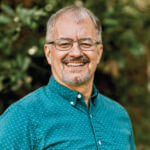While in south Alabama—one of the last strongholds of slavery—I was reminded that only the true gospel can bridge the racial divide.
If I had been a black slave in Alabama in 1860 I would have been worth about $3,000 on the auction block because of my gender and height. Taller men cost more.
That’s one thing I learned this week while visiting a museum in Mobile, Ala., where some of the last slaves were sold in the United States. The museum also offered a sobering recreation of the interior of a slave ship, showing how Africans were stacked like cord wood and chained to each other in the frighteningly narrow hold.
| “Being in south Alabama this week has reminded me that we still have a long way to go when it comes to racial healing. Some of these old wounds are still bleeding.” |
I put the authentic iron shackles on my arms to feel what those people suffered. I lost my appetite thinking of how many slaves died from disease or lashings before they could be sold in markets in Mobile, New Orleans or Savannah, Ga.
I still can’t fathom how human beings could treat other human beings with such cruelty. And it blows my mind when I consider that in 1860 the slave population in the South numbered more than 3.9 million. The estimated value of these slaves, based on their market price, was more than $4 billion.
One isolated corner of the museum in Mobile featured some newspaper clippings from the mid-1800s. They were “runaway notices”—a type of classified advertisement commonly placed by owners looking for fugitive slaves. Here’s an example of one such notice:
$10 Reward. RAN AWAY from the subscriber, on the 2nd day of this month, a NEGRO MAN named ABRAM. Said negro is about twenty-five years old, five feet nine inches high, and weighs about one hundred and sixty pounds, is black, and speaks slowly when spoken to by a white person; wears very long hair and usually has it plaited and tied up. I will give the above reward for his delivery to me at Florence, Ala.
Jan. 19, 1859. JAS. B. GRAY.
So if I had been a black slave in Alabama, and I had run away from my chains, my owner might pay $10 to the person who captured me like an animal and returned me to my master’s farm.
History can be painful.
This is not a comfortable topic, and some Christians think we just need to “move on.” But being in south Alabama this week has reminded me that we still have a long way to go when it comes to racial healing. Some of these old wounds are still bleeding. Many churches are still politely segregated. Walls of suspicion and mistrust still divide people of faith.
This past Sunday night I spoke at a meeting in Brewton, Ala., that attracted Christians from nine area churches. I reminded them from Mark 7 that Jesus led the way for us in breaking the racial barrier. When the Pharisees questioned Jesus because His disciples did not follow their strict religious codes of hygiene, Jesus called them hypocrites and then immediately went to the region of Tyre—outside the borders of Israel—and ministered to a desperate Gentile woman who was considered unclean by Jewish leaders (see Mark 7:1-9; 24-30).
Jesus was clearly showing the Pharisees that true faith has nothing to do with living in a sanitized, racially segregated world. Jesus popped their bubble by venturing into Gentile territory, setting up His base in a Gentile house (7:24) and casting a demon out of a Gentile woman’s daughter.
Jesus told the Pharisees that their holier-than-thou traditions actually nullified the Word of God. They were obsessed with washing their hands and dishes to keep themselves pure; Jesus was focused on touching the untouchables of society so that God’s love and mercy could spread to everyone. We have a choice: Sterile religion or radical compassion.
I’m convinced we won’t achieve true racial reconciliation until we all become more intentional about it. Healing won’t happen if we don’t make it a priority. What will it require? If we truly want to be a prophetic people, the church must address racism from every angle:
- We must offer Christ’s healing to those who have been treated unjustly (this includes Native Americans as well as immigrant communities).
- We must challenge Christians to let go of racial offenses rather than tolerating a climate of bitterness and resentment.
- We must build multi-ethnic churches led by multi-ethnic leadership teams.
- We must be willing to feel the pain of those who have suffered discrimination so we can truly “bear one another’s burdens” (Gal. 6:2, NASB). That means we have to educate ourselves about the history of racism in our own communities—and dialog with the people who have been most affected.
This week would be an appropriate time for all of us to jumpstart our reconciliation efforts. June 19 is Freedom Day, otherwise known as Juneteenth—a holiday commemorating the emancipation of black slaves (an act President Abraham Lincoln said was a response to God’s leading). Instead of viewing Juneteenth as a “black thing,” all churches that care about justice and compassion should celebrate the fact that God heard the cries of American slaves and blessed them with freedom and dignity. Then we should link arms across racial lines and work to bring that dignity to everybody.
J. Lee Grady is editor of Charisma. You can follow him on Twitter at leegrady. To learn more about the Juneteenth holiday, click here.
J. Lee Grady is an author, award-winning journalist and ordained minister. He served as a news writer and magazine editor for many years before launching into full-time ministry.
Lee is the author of six books, including 10 Lies the Church Tells Women, 10 Lies Men Believe and Fearless Daughters of the Bible. His years at Charisma magazine also gave him a unique perspective of the Spirit-filled church and led him to write The Holy Spirit Is Not for Sale and Set My Heart on Fire, which is a Bible study on the work of the Holy Spirit.







Leave a Comment
You must be logged in to post a comment.